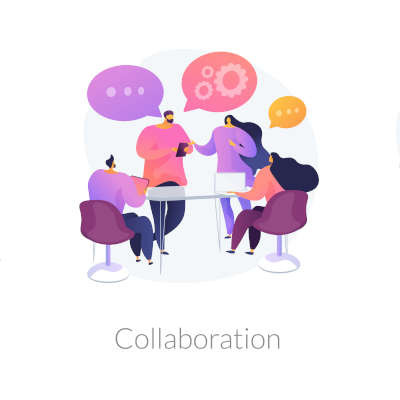Windows is the most used operating system in the world, which should really come as no surprise. After all, it can be found in just about every environment: most businesses utilize it, and there is no shortage of Windows desktops and laptops in homes around the world. While nothing has been set in stone yet, Microsoft may implement a new setting to let all the different uses of Windows shine.
BEI Blog
If I were to ask you what you believed was the biggest potential threat to your business’ future, what would your answer be? The correct answer for most is the risk that an employee might let in a threat—intentionally or not. Let’s investigate how this might happen, and what you need to do to stop it.
There is no denying that “collaboration” is one of the biggest business buzzwords right now… and for good reason, since it is a prerequisite for any business seeking to compete in its market. Let’s take a different tack than we usually would and consider some of the non-technical elements your business needs to incorporate to encourage collaborative work.
Collaboration is widely accepted as a “must-have” in the current, connected business environment… at least, for any organization that wants to remain competitive. Let’s take a few moments and consider what needs to be present for any collaborative efforts to be successful, and the skills you should work to develop in your team members to enhance their capacity for cooperation.
Most people like new technology, whether it is a lamp shaped like the moon, a new video game console, or just a gadget that may improve their life a little bit. We looked around to try and find some business-esque technology the professional would be able to use in their office (or home office). Let’s take a look at them now:
With so many people working from home right now, businesses have managed to keep their operations going somewhat successfully by using the remote solutions that are available today. While it is fortunate that today’s technology enables businesses to do so, the importance of cybersecurity cannot be understated as remote work is implemented.
When a group of people work together in an office, there is a sort of etiquette that forms to help everyone do the most effective work as they can. Of course, with many employees working remotely for some time now, a lot of these behaviors may have slipped. Here, we’re reviewing some of the technology manners that your team should keep in mind so that the whole of your business can work productively.
Did you know that over 80 percent, eight-zero, of cyberattacks are the result of stolen access credentials? It’s no wonder that the username/password combination that we’re all used to is being actively phased out by many tech companies—including Microsoft—in favor of more secure, passwordless authentication measures.
When so much to do with business nowadays relies on collaboration, it only makes sense that the solutions that enable this kind of cooperation would be seen as assets. Take video conferencing solutions - while many of their benefits may seem obvious, they have additional impacts that may not be initially apparent. Let’s review some of these benefits.
Machine learning and artificial intelligence have enabled us to accomplish great things with the computers we have access to today. However, it is equally true that these same innovations have also produced a great number of threats. One threat that is particularly dangerous in today’s day and age is the presence, and growing prevalence, of “deepfakes” in the media.
It’s no secret that a business’ security is one of its most important considerations. It would seem that there is a daily reminder of this unfortunate fact - but it’s even more unfortunate that many people aren’t aware of where many threats can actually come from. Below, we’ll discuss how some threats start on the inside - as well as what you can do to help stop them.
From the Inside?
Some may be surprised to learn that one of the biggest threats to your business technology is the group of people you’ve hired to work with it. There are a variety of reasons that your end-users can create a security problem through their actions.
Vengeance - As melodramatic as it sounds, if an employee is dissatisfied enough by something to do with their job, they might just lash out against the business. Whether that takes the shape of deleting critical files before storming off, unleashing malware into your system, or just breaking some critical component, your business could find itself in deep trouble. Even worse, if the employee thinks ahead about it, they could potentially figure out how to hide their actions until they are long gone, or just access your network later to mess with your business - and the longer an issue persists, the more it will ultimately cost you.
The best way to fix this is to simply remove an employee’s credentials the moment they are no longer in your employ - and to mitigate this kind of situation from happening in the first place. If you keep your employees satisfied, engaged in their work, and happy, if they do ultimately leave, it will most likely be a departure spurred by greener pastures elsewhere, and not animosity toward your business. Being Bamboozled - How many of your employees read these blogs, or have gone over our website? Are they up-to-speed on how to best protect themselves against social engineering attacks by cybercriminals? These attacks can be particularly effective, as they take an employee’s instinct to do as they are told and pit it against their ability to shrewdly analyze an incoming message.
A social engineer will reach out to your employee under the guise of being someone else, as either an authority figure in your company, a client, or another business contact. This allows them to request certain information that some employees would be only too eager to hand over (after all, if the boss is asking for something, you deliver it, right?). The simplest way to eliminate this threat is to make sure your employees appreciate the reality of it, educating them and reinforcing the proper procedures to ensure that information isn’t just given out to someone who asks nicely.
Inappropriate/Illegal Activities - Unfortunately, a workstation is not just a great productivity tool. It is also one of the most potent distractions out there, thanks to all the content available online that should not be accessed by someone in a professional environment. From games, to adult material, to social media, to watching x-animal try to mimic y-human activity on YouTube, you are up against a formidable foe if you try to wrangle the Internet. However, it is crucial to your network security that you do so, as threats can be very easily hidden in content that would seem harmless on the surface. Protecting yourself against these threats means that you have to apply patches as they become available, and it can’t hurt to block access to certain websites if you discover that there is a tendency for them to be accessed during work hours.
Of course, there’s inappropriate, and then there’s illegal. Unfortunately, unless you can establish that you have taken measures to prevent such activities, any illegal activities performed on a business’ network are the responsibility of the owner. Citibank learned this the hard way, when its employees downloaded materials from the Internet that had absolutely no business being accessed in the workplace. This activity got Citibank sued for $2 million. This is why it is especially important to monitor your network activity, and again, block access to certain sites. You should also keep a documented acceptable use policy, signed by every employee, so that you can legally protect yourself should the need arise.
Leaking Information - There are a variety of reasons that an employee could want to take information out of the safe environment of your network. Those with good intentions may just want to get some extra work done at home - but we’ve all heard where the road paved with good intentions leads to. A frustrated employee might decide to take a little something along when they leave to entice their next employer into hiring them.
Either way, your data is at risk, so you need to take steps to prevent such activities. A few options are to require permissions for certain devices to access the network, and to require authorization to connect a device to Wi-Fi or Bluetooth within the office.
As unfortunate as internal threats inherently are, you need to accept that they are real in order to deal with them. BEI can help. Reach out to us at (844) BIZ-EDGE to learn about our solutions to your security concerns, inside and out.















